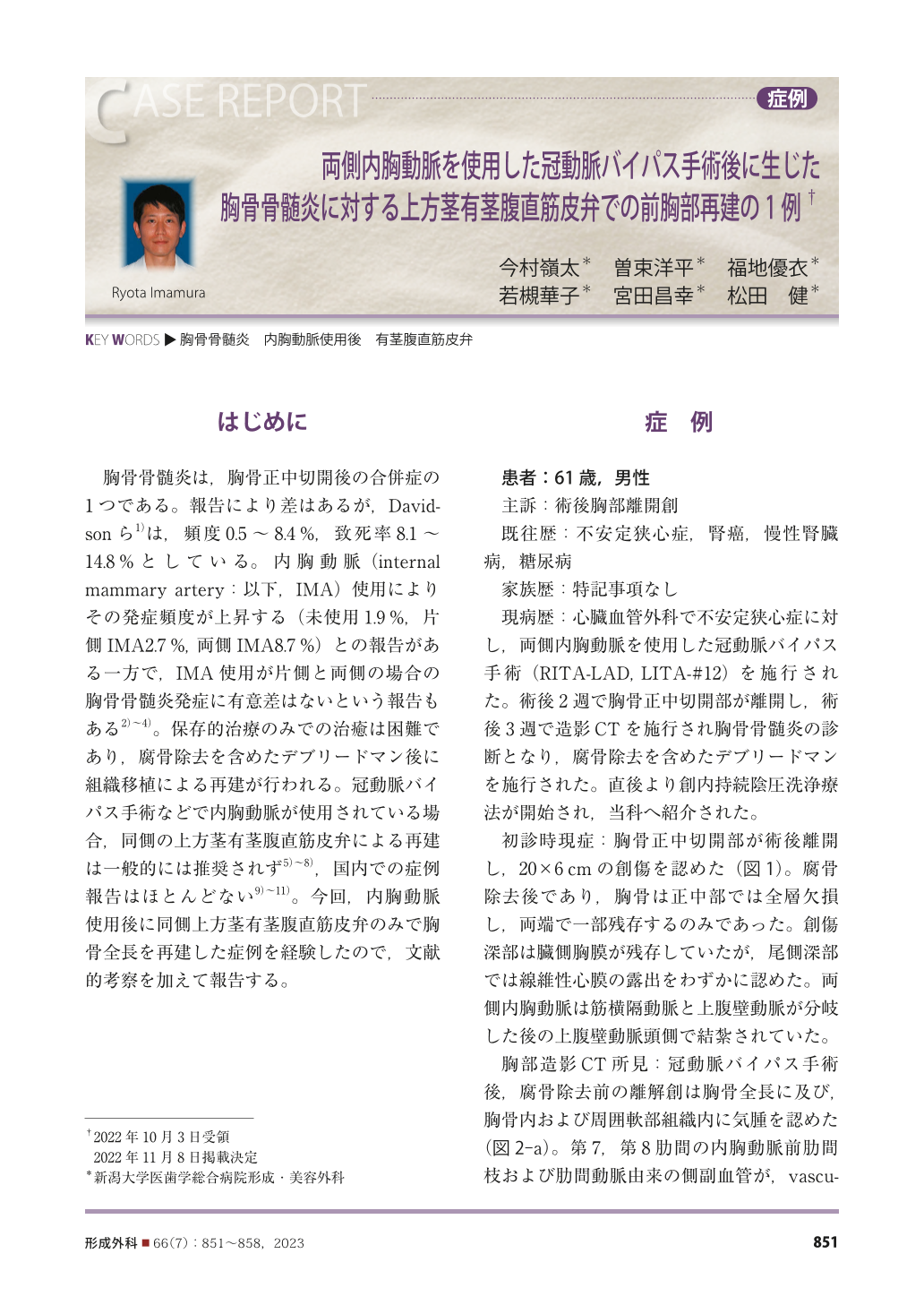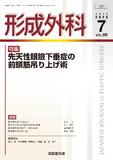Japanese
English
- 有料閲覧
- Abstract 文献概要
- 1ページ目 Look Inside
- 参考文献 Reference
はじめに
胸骨骨髄炎は,胸骨正中切開後の合併症の1つである。報告により差はあるが,Davidsonら 1)は,頻度0.5〜8.4 %,致死率8.1〜14.8 %としている。内胸動脈(internal mammary artery:以下,IMA)使用によりその発症頻度が上昇する(未使用1.9 %,片側IMA2.7 %, 両側IMA8.7 %)との報告がある一方で,IMA使用が片側と両側の場合の胸骨骨髄炎発症に有意差はないという報告もある 2)〜4)。保存的治療のみでの治癒は困難であり,腐骨除去を含めたデブリードマン後に組織移植による再建が行われる。冠動脈バイパス手術などで内胸動脈が使用されている場合,同側の上方茎有茎腹直筋皮弁による再建は一般的には推奨されず 5)〜8),国内での症例報告はほとんどない 9)〜11)。今回,内胸動脈使用後に同側上方茎有茎腹直筋皮弁のみで胸骨全長を再建した症例を経験したので,文献的考察を加えて報告する。
Sternal osteomyelitis is one of the most common complications after a median sternotomy. The combination of a vertical rectus abdominis muscle(VRAM)flap with a pectoralis major flap or an omental flap with a full-thickness skin graft are common treatments for overall sternal defects. However, VRAM flaps are not commonly recommended after ipsilateral internal mammary artery(IMA)ligation. Considering the angiosome concept advocated by G.I. Taylor et al. in 1987 and vascular delay, an overall sternal defect's delayed reconstruction is successfully achieved by only the use of a VRAM flap even after IMA ligation. The choke vessels between the first(intercostal artery)and the second(superior epigastric artery)vascular territories dilate and transform to the true anastomosis, and then after a few weeks, the third(inferior epigastric artery)vascular territory becomes involved in the flap. The choke vessels between the third and fourth(femoral artery)vascular territories are the flap survival endpoint. A 61-year-old man with both IMAs ligated for coronary artery bypass surgery was diagnosed with entire sternal osteomyelitis and was reconstructed the use of only a 7th collateral intercostal artery pedicle VRAM flap. The full range of the flap engrafted. There has been no recurrence as of 6 postoperative months, and the patient is very satisfied with the results.

Copyright© 2023 KOKUSEIDO CO., LTD. All Rights Reserved.


